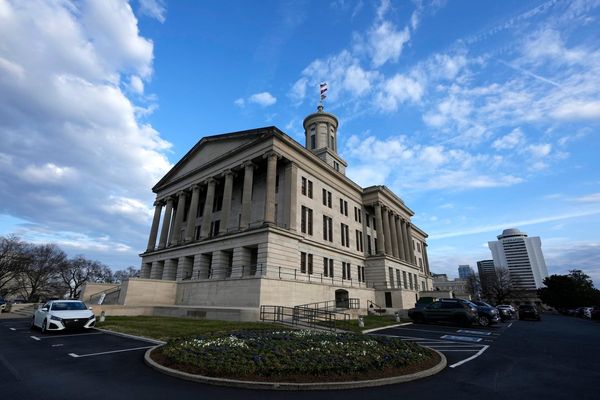
Abortion is now fully legal in every jurisdiction in Australia. Western Australia became the last state to decriminalise it just two months ago, in September 2023. And the Australian population is solidly pro-choice: a 2021 study found 76% of Australians support access to abortion.
Yet access to abortion care here has been described as a “lottery” in a 2023 Senate inquiry report. My research into abortion provision in Australia over the past 30 years doesn’t describe chance, but an inadequate system.
Doctors’ historical unwillingness to provide abortions is central to the access problem – and it’s underwritten by the failure of medical schools to adequately train them in this essential aspect of health care. The public health system is culpable, too, for its lack of responsibility for ensuring fair access to abortion services.
Since abortion laws were liberalised in the 1970s, abortions have been performed by a small number of doctors. During my research, I spoke to 12 of those doctors, from around Australia. Most began providing abortions before 2000 and decriminalisation – the oldest did so in the 1960s.
The key things we need now include more GPs providing medical abortions – especially in rural and regional Australia – and more doctors who will provide surgical abortion care, including at the later stages of pregnancy. We also need more basic training to introduce students to abortion. The actions of our medical schools and public hospitals will be central to meeting these goals.
In the past decade, the Royal Australian and New Zealand College of Obstetricians and Gynaecologists has developed a program for trainees interested in specialising in sexual and reproductive health. The 2023 Senate Inquiry was “floored” to hear only two hospitals in the country provide abortion care to the level that enables them to host the program.
Medical abortion
Only around 10% of GPs currently provide medical abortion – inducing a miscarriage using oral medication, ideally with mifepristone and misoprostol. That number is less in rural and regional areas.
Until recently, medical practitioners were required to register and be certified to prescribe abortion medicines and pharmacists had to register to dispense them.
In July, the Therapeutic Goods Administration removed this restriction, also allowing any healthcare practitioner with appropriate qualifications and training to prescribe medical abortion pills – including nurses and midwives.
Legislation in South Australia, Victoria and Western Australia provides for qualified health professionals (not just doctors) to prescribe medical abortion and Queensland has just introduced similar legislation. But elsewhere, laws would need to be changed to relax the hold of doctors on the future of this health care.
Read more: What is a medication, or medical, abortion? 5 questions answered by 3 doctors
‘My wife doesn’t want me to’
Anti-abortion doctors are a minority. But they can have an outsize influence. In the 2020s, their influence in Wagga Wagga limited services at the base hospital and inhibited local GPs’ provision of medical abortion.
The Australian Medical Association and the Royal Australian and New Zealand College of Obstetricians and Gynaecologists have significantly liberalised their positions on abortion since the 1970s. However, both insist on legislation to protect doctors’ right to conscientiously object to performing abortion – even though professional codes of ethics already state this entitlement.
The medical profession’s moral and social conservatism has caused difficulties for both private providers and public hospitals.
Private clinics in regional Queensland and Tasmania have relied on fly-in, fly-out doctors, adding to clinic costs. Metropolitan locations sometimes struggled, too. In Perth, Dr Judith Nash’s clinic, which operated from 2001 to 2013, relied on abortion-providing locums from Sydney and Melbourne to allow her to take leave.
In Queensland, Cairns sexual health doctor Robbie described the lack of advocacy from the obstetrics and gynaecology profession in his state as “very disappointing”. He told me, “I think they don’t respect women’s rights”.
Ingrid, a South Australian abortion-providing GP, recalled doctors who had expressed interest in working alongside her in South Australian hospitals, but “then they’ve come back to me a couple of weeks later and said ‘Oh, actually I can’t do that, my wife doesn’t want me to’ or ‘my husband doesn’t’”.
For her, she told me, “it was really a feminist calling to do abortions”.
With some bravado, Rosalie, a GP who had provided abortions across three states before decriminalisation, told me abortion-providing doctors “just go ahead and do our own thing”.
Her social life could pose challenges though. “I’ve managed to silence some dinner parties when people have pushed me and said, ’Well where do you work? What do you do?’”.
A brief history of abortion and doctors
The first generation of post-liberalisation abortion providers, who practiced from the early 1970s until the 1990s, had seen the effects of unsafe illegal abortions.
In 1972, Dr Bertram Wainer launched the first overtly operating abortion clinic in Australia, now known as The Fertility Control Clinic. It trained doctors and acted as an agent of social change. Those who set up private clinics in the early days were often represented as “mavericks”. Perhaps they needed to be. Peter Bayliss opened the first private clinic providing abortions in Joh Bjelke-Petersen’s Queensland in the late 1970s. It was raided by police in 1985.
Bayliss and his anaesthetist, Dawn Cullen, were arrested but subsequently acquitted, in a case that set the legal precedent for lawful abortion in Queensland. He ran the clinic until his death in the mid-1990s, a controversial media figure until the end.
A second generation of abortion providers led the expansion of the private sector in the 1990s and continued to advocate for reform and improved services.
A third generation of abortion doctor leadership matured in the 2000s, centred in the public sector. Many are feminist women who have published research about abortion, as well as campaigning for change.
In 2005, Cairns-based Caroline de Costa, Australia’s first female obstetrics and gynaecology professor, initiated the campaign to remove the Howard government legislation that prevented the importation of mifepristone (also known as RU486). She subsequently began providing it, in limited clinical circumstances.
GP Ea Mulligan in South Australia built on de Costa’s legacy, working to receive permission to use mifepristone for everyday abortions, before it was commercially imported. In the late 2010s, obstetrics and gynaecology abortion provider Paddy Moore led the improvement of late abortion services at Melbourne’s Royal Women’s Hospital.
In 2019, Brisbane obstetrician and gynaecologist and Uniting Church leader Carol Portmann appeared in the SBS reality TV program Christians Like Us, which featured ten Christians living as housemates for a week. She came out as an abortion provider to her ten Christian housemates. “I believe as a Christian, and as a doctor, I am here to help people and guide them through whatever situation they are in without judgement,” she has said.
Private sector doctors led the provision of medical abortion by telehealth. GP Philip Goldstone, medical director of not-for-profit national abortion provider MSI Australia, piloted its telehealth service – now the biggest in the country. MSI provides about 40% of all abortions in Australia.
Read more: Early medical abortion is legal across Australia but rural women often don't have access to it
‘Rewarding work’
Abortion care is rewarding work. As GP Simon said, “there’s not actually many areas of medicine where women – or patients – can come to you with a problem that you can solve on the day and they go home.”
In 2019, gynaecologist Paddy Moore said an “increasing number of junior doctors see abortions as ‘bread and butter medicine’”.
Nonetheless, abortion care still relies on “champions”. Doctors are not the only advocates for it, but their legal and cultural authority is still necessary.
While nurses and midwives are part of the solution to the problem of doctors’ reticence in providing abortions, the culture of medical schools and the profession more broadly must change. Abortion needs to become a normal part of universal health care.
All interviewees are identified by pseudonyms. Barbara Baird’s Abortion Care is Health Care (Melbourne University Press) tells the history of abortion provision in Australia since 1990.
Barbara Baird receives funding from the Australian Research Council. She is Co-Convenor of the South Australian Abortion Action Coalition.
This article was originally published on The Conversation. Read the original article.







